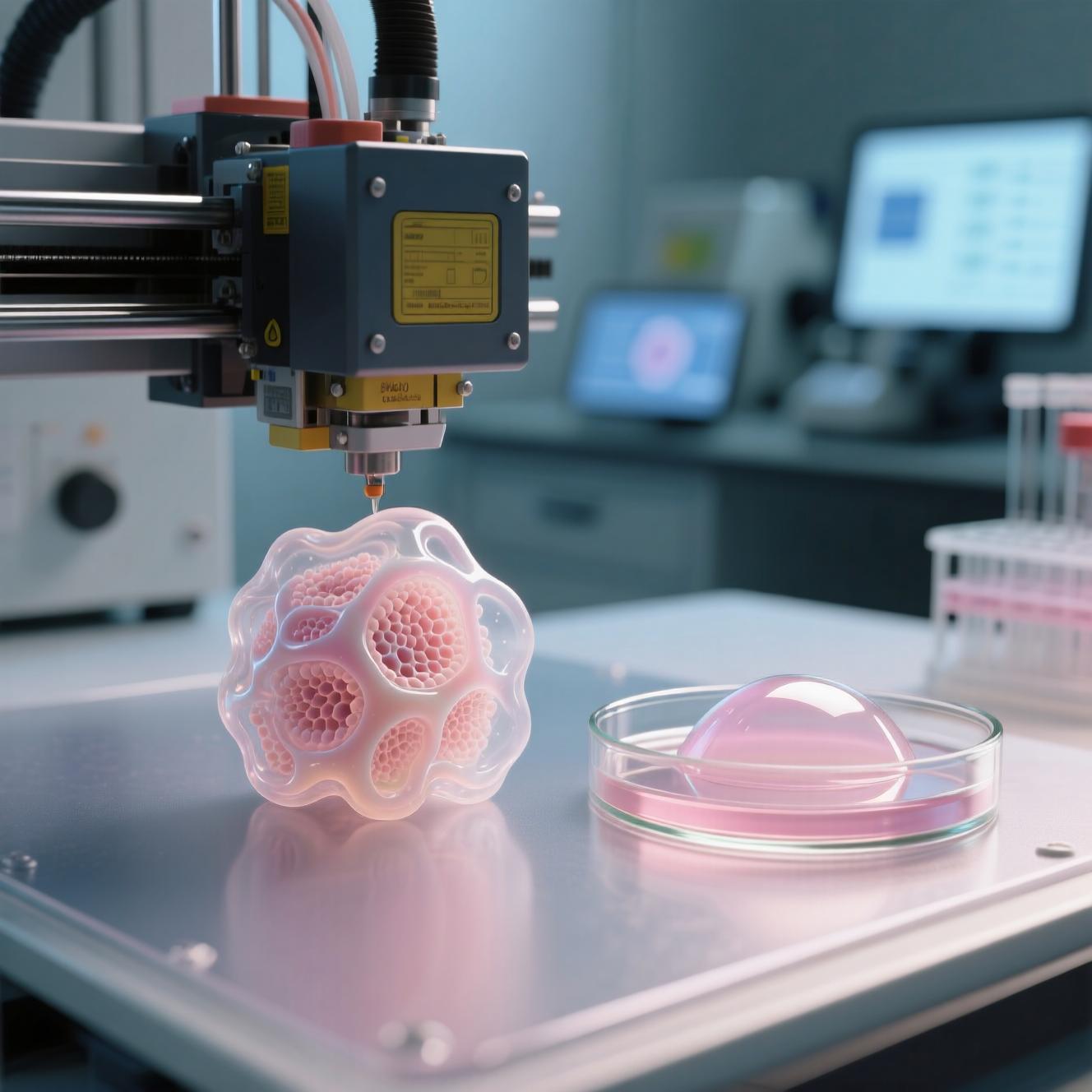
A recent research reviews the shift from 3D to 4D bioprinting, showing how smart biopolymers enable adaptive, shape-changing structures for sustained drug delivery and tissue engineering.
Imagine a world where medical implants can adapt to your body, where tissues heal themselves with minimal intervention, and where tiny printed structures release drugs exactly when your body needs them. Sounds like science fiction, right? Well, not anymore.
Researchers are now pushing 3D bioprinting into a new era—4D bioprinting. This cutting-edge technology introduces time as the fourth dimension, allowing printed biological structures to change shape, function, or behavior over time in response to stimuli.
The research paper “Advancement of 3D Bioprinting Towards 4D Bioprinting for Sustained Drug Delivery and Tissue Engineering from Biopolymers” gives us a detailed roadmap of how this transformation is happening and what it means for the future of medicine. Let’s explore it. 💡
3D bioprinting has already changed biomedical engineering by enabling the printing of tissues, scaffolds, and even organ-like structures using living cells and biomaterials. But it has limits:
That’s where 4D bioprinting steps in. By integrating smart biomaterials, 4D printed structures can:
In short: 3D gives us structure, while 4D gives us life-like adaptability.
Think of 4D bioprinting as a marriage between biofabrication and smart materials. The process uses:
This allows scientists to create structures that don’t just exist—they evolve.
One of the main goals is to create dynamic tissue scaffolds that can adapt as new tissue grows. For example:
Imagine a tiny printed capsule that releases drugs only when your body needs them:
Since 4D printing can use patient-specific data, implants and drug carriers can be tailored to individual needs. Think of it as custom-made therapy that grows and adapts with you.
Beyond medicine, these smart materials could also power biomedical devices that bend, twist, or move without traditional motors.
The paper highlights several exciting breakthroughs:
But the researchers also point out the challenges:
The future of 4D bioprinting looks bright—and a little futuristic:
Pills or patches that respond to body signals like glucose levels, releasing insulin only when needed.
If 3D printing gave engineers the ability to build living structures, then 4D printing gives them the ability to create living systems that think and respond.
This means:
It’s a giant step toward truly personalized, regenerative medicine.
The journey from 3D to 4D bioprinting is more than a technological upgrade—it’s a major conceptual transformation. By introducing time and adaptability into the equation, engineers and biomedical scientists are shaping the future of healthcare.
While challenges remain, the potential of bioprinting in tissue engineering, drug delivery, and personalized medicine is enormous. The next decade may very well see the first clinical applications of 4D bioprinted implants that change and grow along with us. 🌍💚
So, the next time you think about a 3D printer, remember—it’s not just about objects anymore. It’s about living, evolving materials that could save lives.
🖨️ 3D Bioprinting - A technology that uses special "bioinks" made of living cells and biomaterials to print tissue-like structures layer by layer. Think of it as 3D printing, but for building mini pieces of living tissue.
⏳ 4D Bioprinting - An upgrade of 3D bioprinting where the printed structures can change over time in response to triggers like heat, light, or pH. The “4th dimension” is time—making implants or tissues that adapt and evolve like living systems.
🧪 Bioink - The "ink" used in bioprinting. It’s a mixture of living cells and biomaterials (like hydrogels or polymers) that can be printed into functional biological shapes.
🧵 Scaffold - A 3D framework that supports cells as they grow into tissues, kind of like scaffolding on a building site but for biology.
🌐 Biopolymers - Natural polymers (like alginate, gelatin, collagen, or chitosan) that come from biological sources. They’re biocompatible, biodegradable, and ideal for making safe, eco-friendly medical materials.
💧 Hydrogel - A jelly-like material that holds lots of water, mimicking the soft environment inside our body. Hydrogels are perfect for hosting living cells and releasing drugs in a controlled way.
🔄 Stimuli-Responsive Materials - Smart materials that react to changes in their environment, like swelling when it’s hot, dissolving at certain pH levels, or bending with light. These make 4D bioprinting possible.
🧬 Tissue Engineering - A field of bioengineering that combines cells, materials, and growth factors to create or repair tissues—helping the body heal itself with lab-made biological structures.
💊 Sustained Drug Delivery - A system that releases medicine slowly over time instead of all at once, ensuring longer-lasting effects and fewer side effects for patients.
🔗 Shape Memory Polymers (SMPs) - Special plastics that can “remember” and return to their original shape when triggered (like heat or light). Imagine a stent that unfolds only when inside your body.
Source: Aftab, M.; Ikram, S.; Ullah, M.; Khan, S.U.; Wahab, A.; Naeem, M. Advancement of 3D Bioprinting Towards 4D Bioprinting for Sustained Drug Delivery and Tissue Engineering from Biopolymers. J. Manuf. Mater. Process. 2025, 9, 285. https://doi.org/10.3390/jmmp9080285
From: COMSATS University; National University of Medical Sciences, Islamabad; Pusan National University; Dubai Medical College for Girls; Kohat University of Science & Technology.